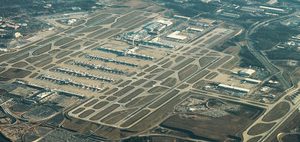Over the past 60 years, the basic design of commercial airliners has remained largely the same, maintaining the 'tube and wing' shape established by aircraft such as the Boeing 707 and Douglas DC-8 in the 1950s. This is because the priority given to safety in commercial aviation and the technological advances in materials and engines that keep this traditional design relevant.
However, yeseahanticipates a major change with the emergence of a new form of aircraft, known as the 'combined wing', which recently received authorization from the Federal Aviation Administration (FAA) to conduct test flights in California.
(See: The airline JetBlue will suspend its operations in Bogotá: what happened).
This innovation arises amid the aviation industry's concern to reduce carbon emissions, but its basic technologies are difficult to change.
Precisely, the idea of the 'combined wing body', similar to the 'flying wing' design used on military aircraft such as the B-2, is being considered by Boeing and Airbus.
So far, only JetZero has achieved a major milestone in the development of this technology, bringing it closer to its goal of having a combined-wing aircraft in service by 2030..
According to Tom O'Leary, co-founder and CEO of JetZero, this technology can reduce fuel consumption and emissions by 50%, which represents a significant advance for the aviation industry.
(See: How much the commercial aircraft fleet would grow to meet air demand in 2034).
The bets that have been made
A rendering of JetZero's combined wing design.
JetZero
The combined wing concept is not new, having been explored since the 1920s. Jack Northrop designed a jet-powered aircraft based on this concept in 1947, which inspired the B-2.
NASA tested the design on the X-48, demonstrating its viability. Airbus has also shown interest by building a prototype in 2020.
However, The main technical challenge is the pressurization of the non-cylindrical fuselage, since the shape mixes pressure and bending loads.
Although composite materials can address this problem, a blended-wing aircraft would have a radically different interior to today's aircraft, with a wider fuselage and the possibility of more varied seating configurations.
For its part, JetZero, under the leadership of O'Leary, pplans to develop three variants of the combined wing aircraft:
– One for passengers with capacity for more than 200 people.
– One for loading.
– Another as a fuel tanker plane.
The company received funding from the US Air Force to develop a full-scale demonstrator, which could also boost the development of commercial models.
The Pathfinder, a scale version, recently approved, is a first step towards a full-size prototype that is expected to fly in 2027, according to media releases.
JetZero seeks to make its aircraft compatible with sustainable fuels and capable of using hydrogen with zero carbon emissions. Although JetZero's goals are ambitious and certification can be a long processo, the company has already sparked the interest of major airlines, which are looking to improve efficiency.
(See: 44 people are unharmed after two planes collide in Kenya).
SOFÍA DÍAZ RICO
Journalist Portfolio



![[Img #74675]](https://thelatestnews.world/wp-content/uploads/2024/12/They-discover-a-new-class-of-X-ray-sources-in-the-150x150.jpg)









![[Img #74675]](https://thelatestnews.world/wp-content/uploads/2024/12/They-discover-a-new-class-of-X-ray-sources-in-the-300x200.jpg)

